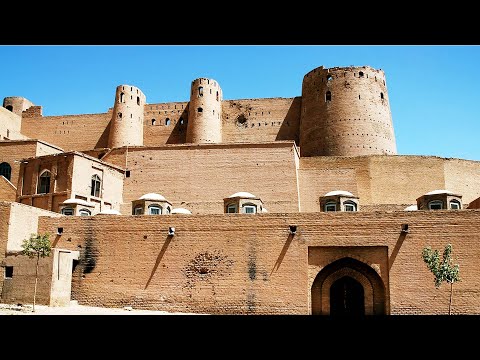
Afghanistan, a country often portrayed through the lens of its recent turbulent history, holds a wealth of stunning historical gems that speak of its rich and diverse heritage. One such treasure is the ancient Citadel of Herat, also known as the Citadel of Alexander or Qala Iktyaruddin. This majestic fortress stands as a testament to Afghanistan’s layered past, echoing stories from the era of Alexander the Great to present times. For those with a spirit for adventure akin to Marco Polo, visiting Herat’s citadel offers a profound glimpse into the heart of Asia’s historical grandeur.
### Historical Significance
The Citadel of Herat has roots that potentially date back to 330 BC when Alexander the Great arrived in Afghanistan during his conquests. The structure has been rebuilt and renovated numerous times over centuries by various rulers who left their mark on this monumental site. It served as a formidable military garrison and a royal residence throughout its history, witnessing the rise and fall of empires.
In more recent history, the citadel underwent significant restoration work that began in 2006, with efforts led by the Aga Khan Trust for Culture and funding from various international organizations. These restorations have revitalized the structure, making it accessible and safe for both locals and tourists to explore its grandeur.
### Architectural Marvel
As one steps into the citadel, they are greeted by imposing brick walls that tell tales of ancient craftsmanship. The architecture is predominantly Islamic, but it incorporates elements from various periods that reflect a blend of cultures which have influenced Herat over millennia. Inside, visitors can explore numerous rooms including halls used for gatherings, residential quarters that housed royalty, and expansive courtyards that provided solace from battles.
Dominating the skyline are two large towers at opposite ends of the fortress offering panoramic views of Herat city — an enchanting sight especially at sunset when golden hues bathe its minarets and bazaars.
### A Cultural Hub
Today’s citadel is not just an empty shell; it is a vibrant cultural hub featuring museums that showcase artefacts ranging from traditional Afghan costumes to weaponry used during different eras in Afghan history. These exhibitions provide insights into everyday life in Afghanistan through time as well as highlight its strategic importance in Silk Road trade routes.
Regular cultural events and exhibitions also take place within this historic precinct, turning it into an educational platform where art and culture merge seamlessly with history.
### Travel Considerations
Traveling in Afghanistan poses certain risks due to ongoing security concerns; thus it requires careful planning. It is imperative for potential visitors to consult their government’s travel advisories before planning any trip to Afghanistan. Joining organized tours led by experienced local guides can enhance safety while providing enriching insights about sites like Herat’s Citadel.
### Conclusion
Herat’s ancient citadel stands proudly not only as an architectural marvel but also as a symbol of resilience amidst Afghanistan’s challenging times. For those akin to Marco Polo with an unquenchable thirst for exploring uncharted territories within our world’s rich tapestry, visiting this historic fortress offers an unforgettable journey back in time coupled with lessons on peace and perseverance witnessed through centuries-old walls. It truly is one of Central Asia’s most inspiring cultural relics waiting patiently for those willing to discover its stories.
